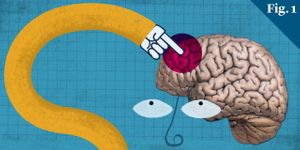First-Ever Gene Therapy for Babies with "Bubble Boy" Disease
There is a genetic disorder affecting the immune system so severely that its patients often require protective isolation, hence the disease’s nickname: “Bubble Boy Disease.” Scientists know this disease as X-linked severe combined immunodeficiency disorder (XSCID). From the St. Jude Children’s Research Hospital, scientists conduct the first-ever clinical trial in infants with XSCID to test the effectiveness of the newest gene therapy approach to treating the disease.
Babies born with XSCID have a mutation in the IL2RG gene, which is normally responsible for making a protein called the “common gamma chain.” Without this protein, the immune system’s function is critically impaired, as immune cells like T cells, B cells, and natural killer cells fail to effectively grow and mature. XCID affects a disproportionate amount of boys, and untreated individuals die of infections without an immune system for protection.
Current treatment for XSCID relies on something that more than 80 percent of XSCID patients don’t even have: a tissue-matched sibling donor for transplantation. Incomplete genetic matches such as parents can act as donors, but the transplantation is fraught with complications and the procedure is much less likely to effectively rejuvenate the immune system.
The new gene therapy from St. Jude provides an alternative to a tissue-matched sibling donor. Researchers instead developed a lentiviral vector, which carries a normal copy of the IL2RG gene and delivers it into the hematopoietic stem cells of patients with XSCID. This treatment also contains certain features to promote safety and effectiveness.
The treatment process involves remove bone marrow so the hematopoietic stem cells can incubate with the lentiviral vector carrying normal IL2RG. Afterward, the stem cells are returned via transfusion.
The clinical trial at St. Jude enrolled seven patients between the ages of 2 and 13 months old. Four months after treatment, five patients had developed immune systems strong enough where they no longer needed protected isolation, containing near normal levels of T, B, and natural killer cells of the immune system, and nearly all were carrying the normal version of the IL2RG gene.
"These results are an exciting early indication that this gene therapy is well tolerated and effective in infants as young as 2 months old with this devastating inherited immune disorder," explained St. Jude’s Ewelina Mamcarz, MD.
Mamcarz’s co-study leader, Brian Sorrentino, MD, agrees, saying that the findings “reinforce hope that gene therapy will prove to be safe and effective at restoring immune function early in life.”
Sources: Genetics Home Reference, St. Jude Children’s Research Hospital









